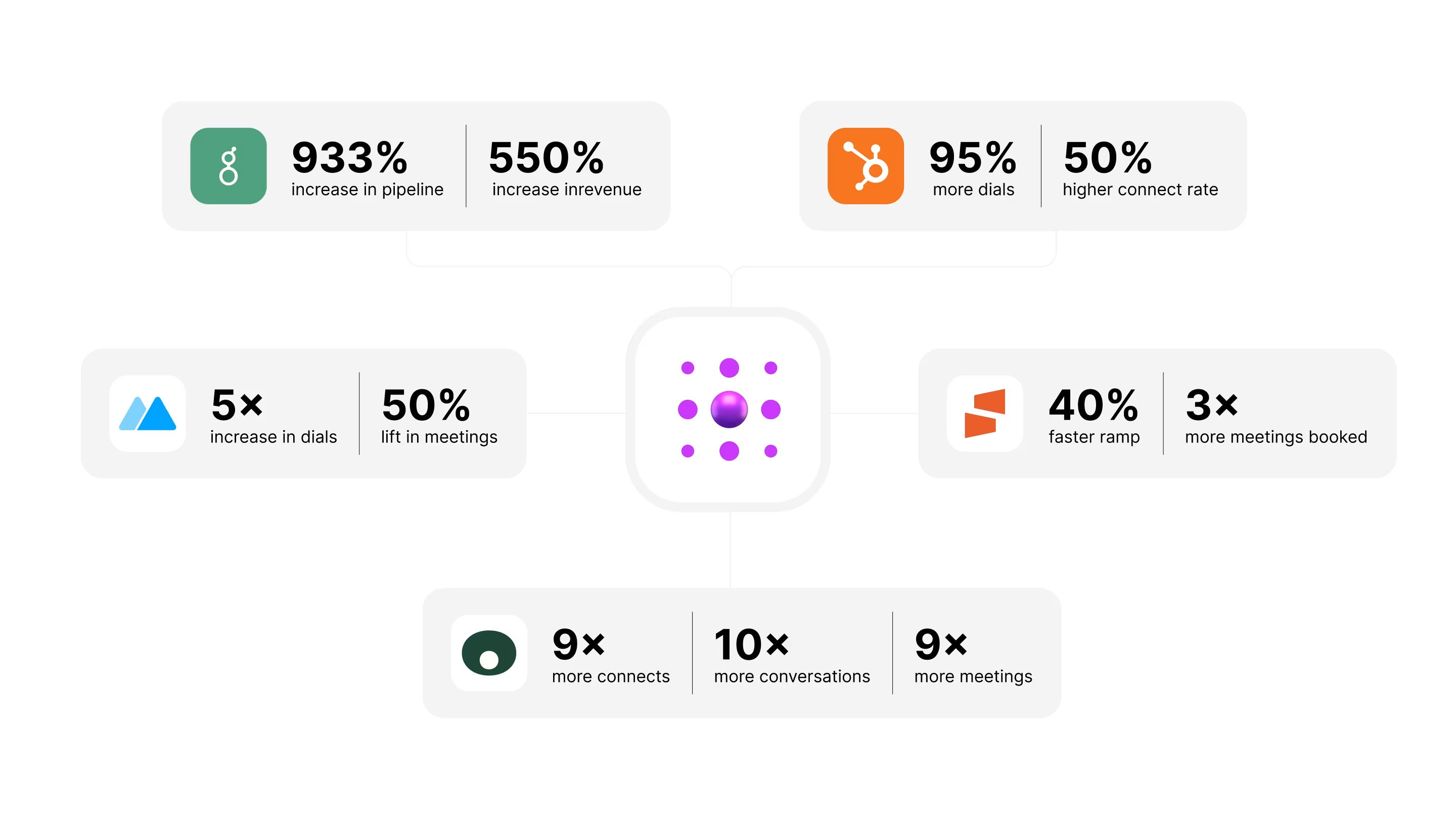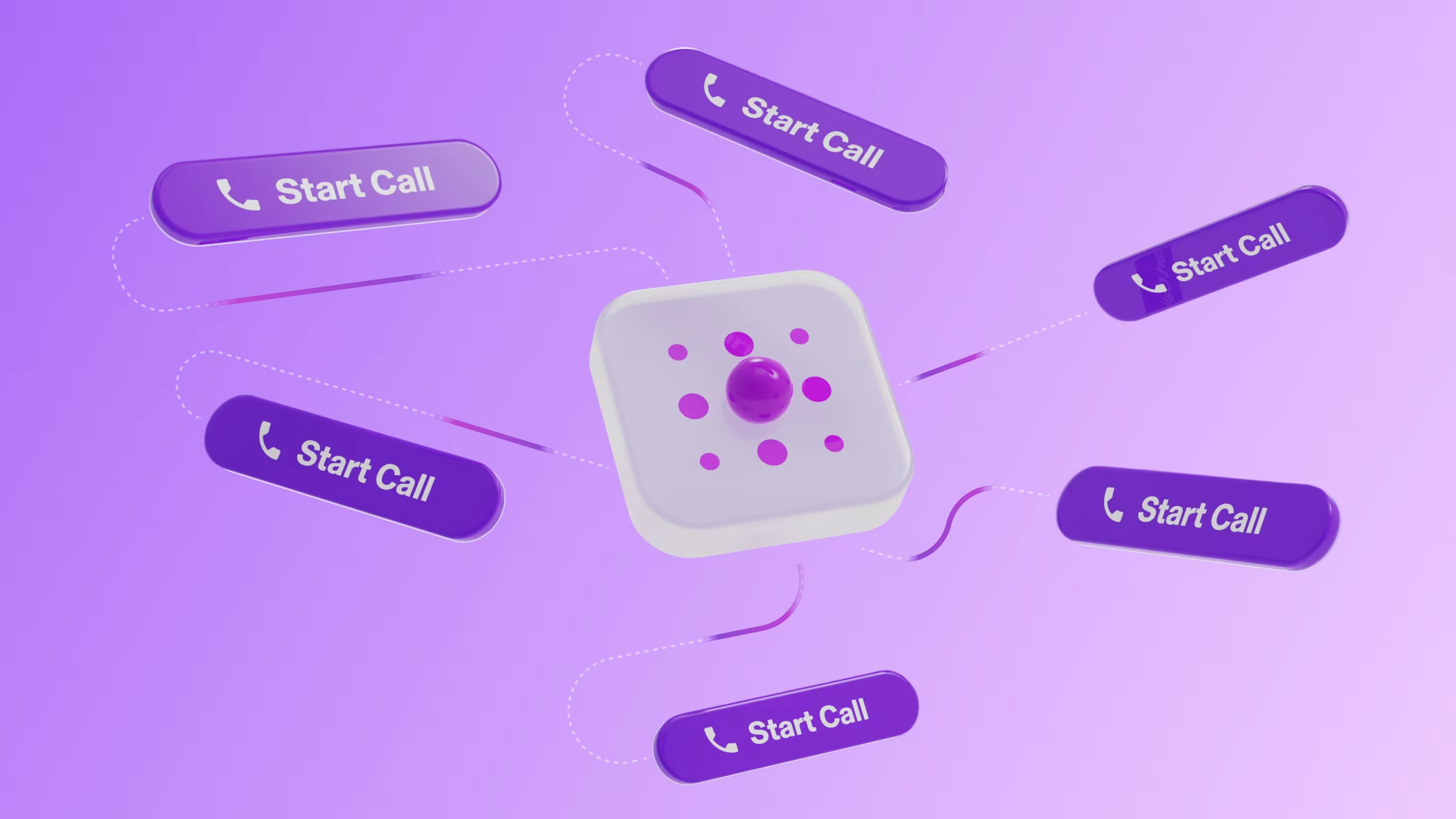Top Dialer Metrics That Predict Pipeline Growth


Why Dialer Metrics Matter
Outbound teams often track the wrong numbers.
They celebrate total dials instead of live conversations. They measure hours worked instead of meetings booked.
Activity looks good on a dashboard, but activity alone doesn’t build pipeline. The quality of conversations does.
Modern outbound leaders now treat dialer metrics as leading indicators of revenue health. The right data tells you whether your reps are spending time talking to humans, improving from coaching, and protecting number reputation. These are all things that compound into pipeline growth.
The Five Metrics That Actually Predict Pipeline
Here’s what separates average teams from top performers.
1. Connect Rate
What it is:
The percentage of outbound calls that reach a real human.
Why it matters:
Connect rate is the heartbeat of outbound. Every other metric flows from it.
If reps aren’t connecting, they aren’t learning, testing talk tracks, or booking meetings.
How to calculate: (Live conversations ÷ total dials) × 100
Benchmarks:
Across 5 million Nooks calls, teams using AI-powered parallel dialing see connect rates between radically higher than single-line dialers.
2. Conversation-to-Meeting Rate
What it is:
The percentage of live connects that turn into scheduled meetings.
Why it matters:
It measures rep quality and message resonance.
A high connect rate with a low meeting rate means you’re talking to people but not saying the right things.
How to improve:
- Train reps on permission-based openers (Nooks data shows a 2.4× lift).
- Use AI Coach to surface the talk tracks that actually convert.
- Review top 10 calls weekly to refine what works.
Benchmark:
Top-performing SDR teams average a 15–25% conversation-to-meeting rate.
3. Pipeline per Rep
What it is:
The total sourced opportunities or pipeline value attributed to each SDR or AE.
Why it matters:
It’s the truest measure of parallel dialer ROI, or any other outbound tactic. A high pipeline per rep proves that the technology and process are amplifying human performance, not replacing it.
How to calculate:
Closed or open opp value ÷ active outbound reps
Benchmark:
Teams using Nooks regularly report 2–3× more pipeline per headcount compared to legacy power dialer setups.
4. Ramp Time
What it is:
The time it takes for a new SDR to reach full productivity.
Why it matters:
Fast ramp means faster revenue. Parallel dialer tech that’s easy to learn and backed by AI prospecting and coaching cuts ramp time dramatically.
Benchmark:
Nooks customers like Seismic and Kustomer reduced ramp time by 40–75% through live coaching and conversation data.
5. Number Reputation and Local Presence
What it is:
The health of your outbound phone numbers and how they appear to prospects.
Why it matters:
Even the best talk track fails if the call never connects.
Number reputation directly impacts connect rate, especially at scale.
Benchmark:
Healthy programs rotate numbers weekly, monitor spam labels, and use local presence for every major region.
Nooks automates all of it: rotations, reputation monitoring, and area-code matching. So reps stay focused on conversations, not maintenance.
Why Volume Alone Misleads Managers
It’s easy to chase activity metrics. A dashboard full of big numbers looks like progress.
But when the only metric celebrated is “dials made,” reps optimize for speed, not outcome.
A good approach: measure how each dial contributes to pipeline.
Example: two reps make 200 dials each.
- Rep A books 2 meetings (1% success).
- Rep B books 8 meetings (4% success).
The difference isn’t effort. It’s efficiency, talk track, and signal quality. Those are the levers that matter.
How AI Improves Every Metric
AI isn’t about automating the conversation. It’s about improving it.
Connect rate rises when AI Prospector feeds reps the warmest leads: prospects showing intent through website visits, past call research, or LinkedIn engagement.
Conversation-to-meeting rate jumps when AI Coach gives real-time feedback. Reps hear what works and adjust their behavior.
Ramp time drops as new hires learn from top performers automatically through call pattern recognition.
Number reputation stays strong as AI monitors and rotates lines before they’re flagged.
AI augments the work humans already do best—building relationships through real conversations.
Customer Results
Greenhouse: 933% increase in pipeline and 550% increase in revenue.
Modern Health: 5× increase in dials and 50% lift in meetings.
HubSpot: 95% more dials, 50% higher connect rate.
Seismic: 40% faster ramp, 3× more meetings booked.
Oyster: 9× more connects, 10× more conversations, 9× more meetings.
Each of these teams transformed their outbound results by tracking and improving the right metrics, not just call counts.

The Dialer Metrics Audit Checklist
For sales leaders ready to modernize their dashboards:
- Replace total dials with conversation rate as your north star.
- Track conversation-to-meeting rates weekly.
- Add a “pipeline per rep” board to your leadership dashboard.
- Audit ramp times quarterly.
- Review number reputation reports monthly.
- Coach live using call data instead of reviewing calls days later.
- Align marketing and SDRs around buyer signals.
- Benchmark progress using team-level trends, not vanity metrics.
If you track these, you’ll see pipeline predictability improve within one quarter.
FAQs: Measuring Dialer Success
1. What’s the most important dialer metric to track?
Connect rate or conversation rate. Without live conversations, no other metric matters.
2. How many connects should an SDR aim for daily?
Top teams target 20–30 live connects per rep per day using parallel dialing.
3. How do I know if my connect rate is healthy?
Anything under 10% likely means reputation issues or poor list quality.
Teams using Nooks average 12–24%.
4. What’s a good conversation-to-meeting rate?
Aim for 15–25%. If you’re below 10%, focus on opener quality and objection handling.
5. How can I improve ramp time?
Pair new reps with AI coaching and call libraries of top performers. Most teams cut ramp time nearly in half.
6. How do I measure number reputation?
Use a dialer with automated spam monitoring and number rotation. Manual checks aren’t enough at scale.
7. How do buyer signals improve dialing results?
Signals identify prospects already in-market, improving both connect and meeting rates.
8. Can AI predict which leads are worth calling first?
Yes. Nooks’ AI Prospector ranks leads based on live data—intent, activity, and engagement—so reps call the right people first.
The Future of Dialer Measurement
The days of celebrating “call volume” should change.
Pipeline leaders now measure what truly predicts growth: live conversations, quality of talk, and team efficiency.
Nooks gives leaders visibility into those metrics in real time—connecting the dots between activity and revenue.
When you track what matters, you build pipeline that compounds.





